How and why to enhance your seller experience?
The job description of a sales rep is quite direct. An empathetic communicator and negotiator who pitches, negotiates, and closes a deal.
But when you finally get to the desk hoping to close them sweet sweet deals, you are showered with a hundred odd administrative tasks like collecting data, updating documents, sitting in meetings to update everyone and their neighbor, taking and giving feedback, creating a pipeline to future-proof your targets and doing market research.
Wait! Did you close that deal though??
Studies mention that only 28-30% of the weekly hours of a seller are spent on selling, while the rest are focused on other internal and admin tasks. The market may seem golden and so does your product, this wafer-thin distribution of energy across multiple activities drains sales reps, leading to frequent seller burnouts.
Companies need to devise a strong strategy for seller experience to make their seller enjoy the process which ultimately translates to customer satisfaction.
Key Summary:
Seller experience plays a crucial role in putting seller efficiency at the forefront, driving sales, and improving the customer journey. You have to deploy a combination of tools, strategies, and systems to help sales reps focus on selling.
By centralizing content, leveraging data, and simplifying decision making you are enabling the seller to reflect on their client interactions. They will become proactive and ultimately invest the freed-up time and energy to improving customer journey.
- What is Seller's experience?
- Why Ignoring Seller Experience Could Hurt Your Sales:
- How to implement a better seller experience for your team:
- How Paperflite Simplifies Seller Experience:
- Happy Sellers, Happier Customers: It’s That Simple
What is Seller's experience?
The company wants to support its executives with the right strategy. Executives want their sales managers to close deals quickly. Sales managers want to exceed the quota. Sales reps go in circles updating documents, finding resources, and giving updates only to get burnt out before the prospect converts. See the pattern here?
Everybody is looking for a smooth sail in sales. Seller experience is designed to put processes, tools, content, data-backed insights, and training to help reduce complexity and ensure the sales team focuses on selling. It improves focus by cutting down on redundancy, reducing seller burnout.
Why Ignoring Seller Experience Could Hurt Your Sales:
- Helps to deal with seller burnout: McKinsey studies state that about 80% of sellers face burnout. Prioritizing tasks and spending time on low-rewarding tasks makes them lose track of the larger picture. With the optimization of the process, reps will focus on revenue growth directly, improving their motivation.
- Make deals close quickly: Optimizing the selling journey helps sellers to move through the pipeline, without clients ghosting them. Effective tools will help them to prioritize and track high-priority clients. Centralized tools and processes allow reps to build relationships for the long term.
- Enhance sales engagement and retention: With less burnout and backend work, people will focus more on the job than filling a time sheet. Better performance will help retain sales reps and reduce attrition.
- Reduce administrative burden: “About 70% of salespeople’s time is spent on administrative activities rather than the actual selling process.” This includes updating documents, keeping track of content material, attending business-as-usual meetings, and attending to queries. This will further increase burnout and reduce focus on revenue growth.
- Achieve targets with ease: Often overworked sales reps fail to put their best foot forward in client negotiations. Seller experience enables sellers to be proactive and guide their clients to the right choice. Closing targets will become easier than ever.
How to implement a better seller experience for your team:
Streamline content and knowledge management:
Managing what information your team needs to know is crucial for an elevated seller experience. Use a central repository of content that will help sales reps find all updated documents in one place. Often, a lack of guidance results in the sharing of outdated content. Use content libraries with intelligent content recommendations, and quit looking for content in the wrong place. Libraries must have search systems to flesh out necessary content without sifting through a zillion folders.
Foster cross-team collaboration:
Salespeople are at the forefront of an organization for a client. They rarely work in silos. However multiple threads of communication are a one-way ticket to ‘information blackhole.’ Improved seller experience enhances the engagement of the sales team with marketing, product, and product marketing teams. Establishing feedback loops about client expectations and requirements from the sales team is helpful in strategizing marketing and product roadmap.
Remove redundancy:
Limiting the content volume available to the sales manager is important. Managers must be able to sort content at a granular level and restrict only relevant content for sales reps. Simplifying the options will reduce the paradox of choice and sales managers can select content closely aligning to their prospect. Make only the content that is relevant to a particular sales manager available to them. Sounds simple?
Adding Tools to Boost Efficiency:
Automate repetitive tasks with AI-enabled tools. Evaluate your current tech stack and eliminate redundant ones, making space for more intelligent ones. Pick devices that are adaptive to multiple devices for use while being on the go.
Prioritize Organising Content and Documentation:
Most of the documentation, except for client data and updates, is repetitive every time a new sales rep joins the team, cueing in a scramble to provide them with all the training materials in the world. This is a waste of time for the new joiner and their buddy/manager. Implementing tools like Paperflite to organize, locate, and share updated documents.
Align the sales process with the customer journey:
a) Understand customer needs stage: Are they considering the purchase or just surfing through? Customers at the discovery stage need an ear to validate their problems and assure them a solution exists. But the same is too mundane for someone who is ready for purchase.
b) Personalize the Interaction: Use data and insights about the customer to make the conversation more relevant. What is the content they are keen on reading? What does it say about their buying behavior? A deep understanding of their pain points and goals allows sellers to offer customized solutions build stronger connections and sell better.
c) Enable proactiveness with the right tools: Schedule that follow-up mail. Send the brief for the meeting in advance. Seller experience relies on sellers being one step ahead of the client’s thoughts while still guiding them.
d) Data-based decision-making: They say everyone has ideas, but the great ones back them with data. Now leverage predictive analytics, intent data, and sales intelligence to improve seller experience. Sellers can prioritize high-intent leads through lead-scoring models by analyzing CRM data, engagement metrics, and conversion rates. They can personalize outreach with behavioral insights, and refine sales cadences based on real-time prospect interactions. A data-centric approach is highly valuable to gauge customer lifetime value (CLV) in a world of unpredicted churns.
How Paperflite Simplifies Seller Experience:
Often sales people scramble for resources while traveling or working remotely. Paperflite is designed exactly to make their life easy. So they can focus on selling and quit playing Indiana Jones discovering ancient content.
Find the necessary content in one place: Forget sifting through folders and ending with outdated content. Paperflite helps you create a single source of truth by centralizing documents in one location so you can access them within a second.

Smart content recommendations: Paperflite is your savior if you are a sales rep stranded in a remote location (or your home office in pajamas) doing a mini-survey in your Slack channel to find what content your peers are peering into. Ditch the awkward ‘Heyyy can you please suggest me some’ with Paperflite’s smart asset suggestions based on the frequency and preferences of your team or colleagues.
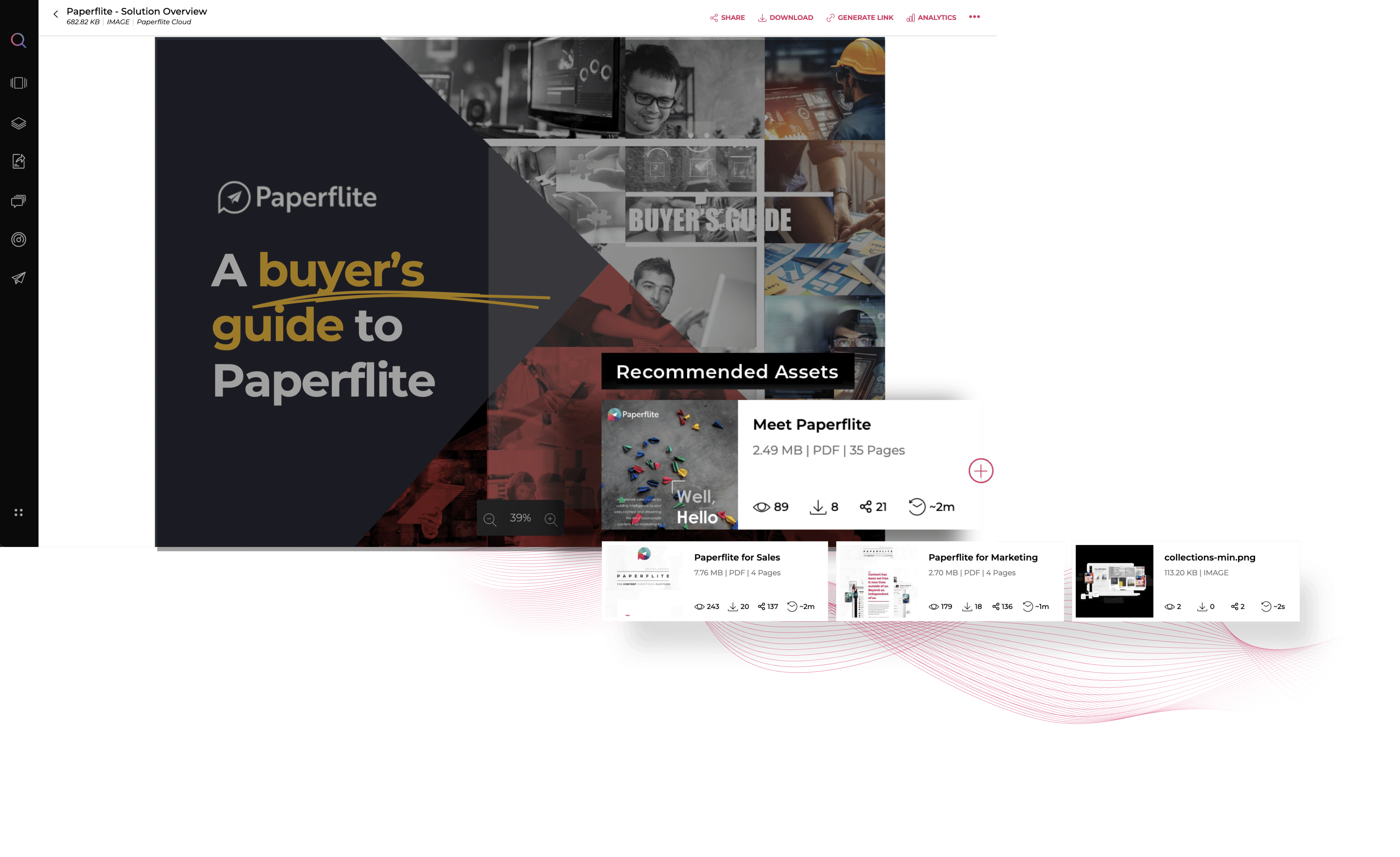
Access only relevant version: Especially if you are a growing, dynamic organization, your content is frequently getting updated. Sellers scattered across the geography are still clicking the ‘sort newest to oldest’ button aggressively in storage folders only to end up with outdated content. With the version control feature, the seller experience will improve by leaps and bounds as you only access the best and latest version of the necessary content.
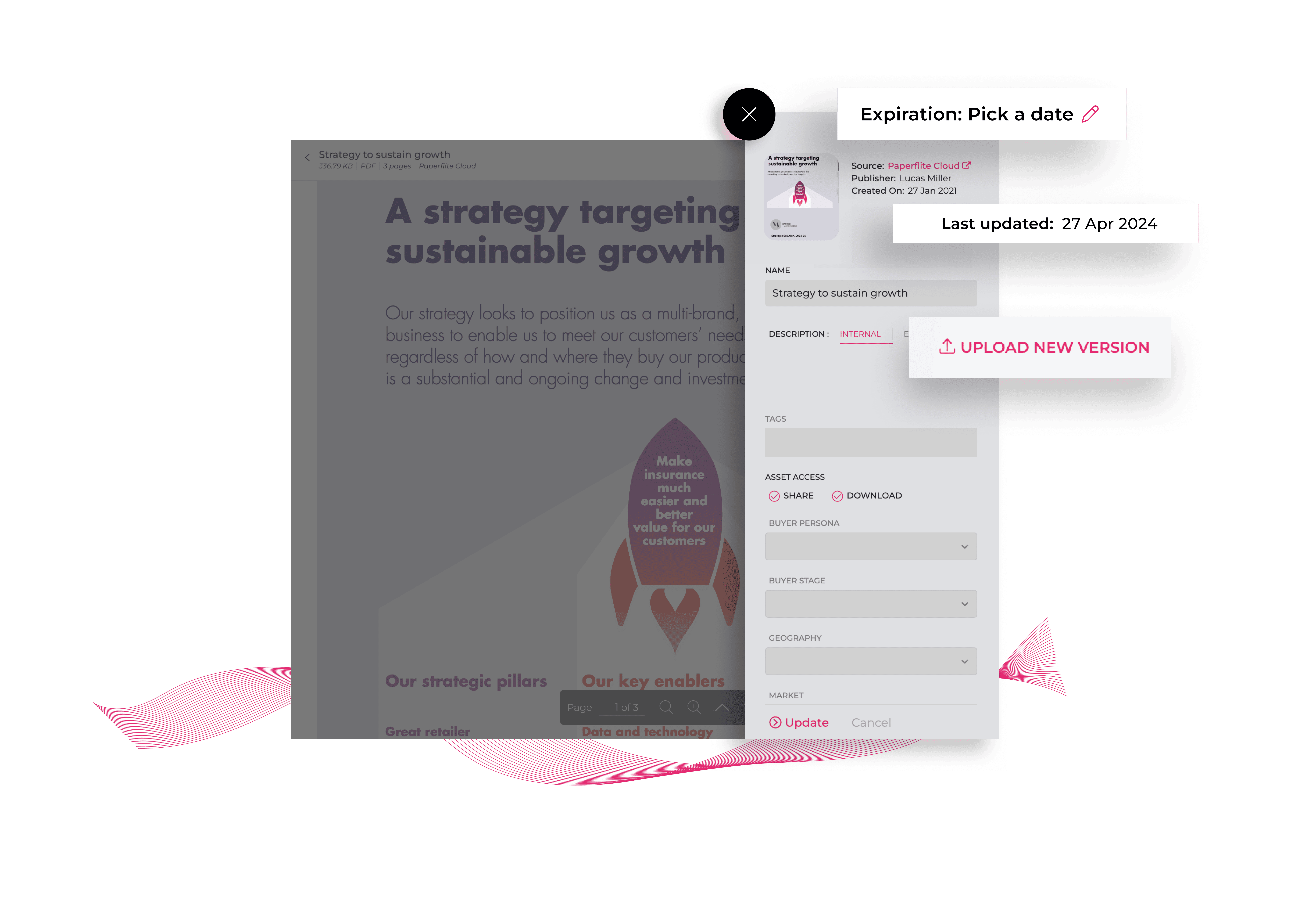
Chrome extensions: Opening the 20th tool when your laptop is already screaming in pain? Fret not, we are not going to be the 21st one! Our Chrome extension helps you to drag and drop content without opening the platform to share assets.
Track customer journey: Now you can quit dumping content on your prospect and pray they will open at least half the files. Paperflite provides you with insights on the deals, probability of conversion, expected revenue, and timeline of the deal.
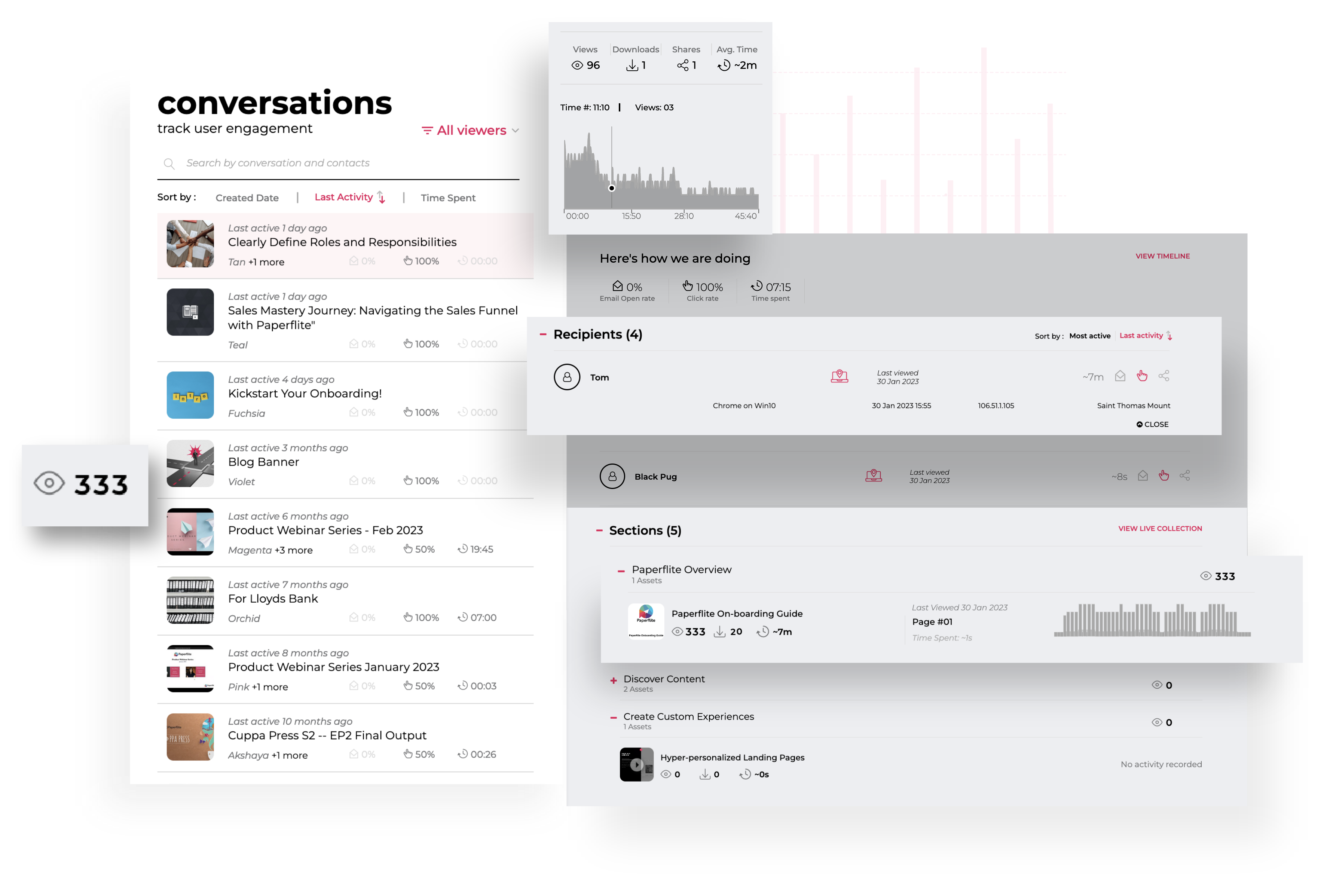
AI-powered search: Yes, we know you have quit typing one phrase after the other on search engines and have started asking specific questions to an AI. Our Seek AI finds you the right asset with the answers to your specific problems.
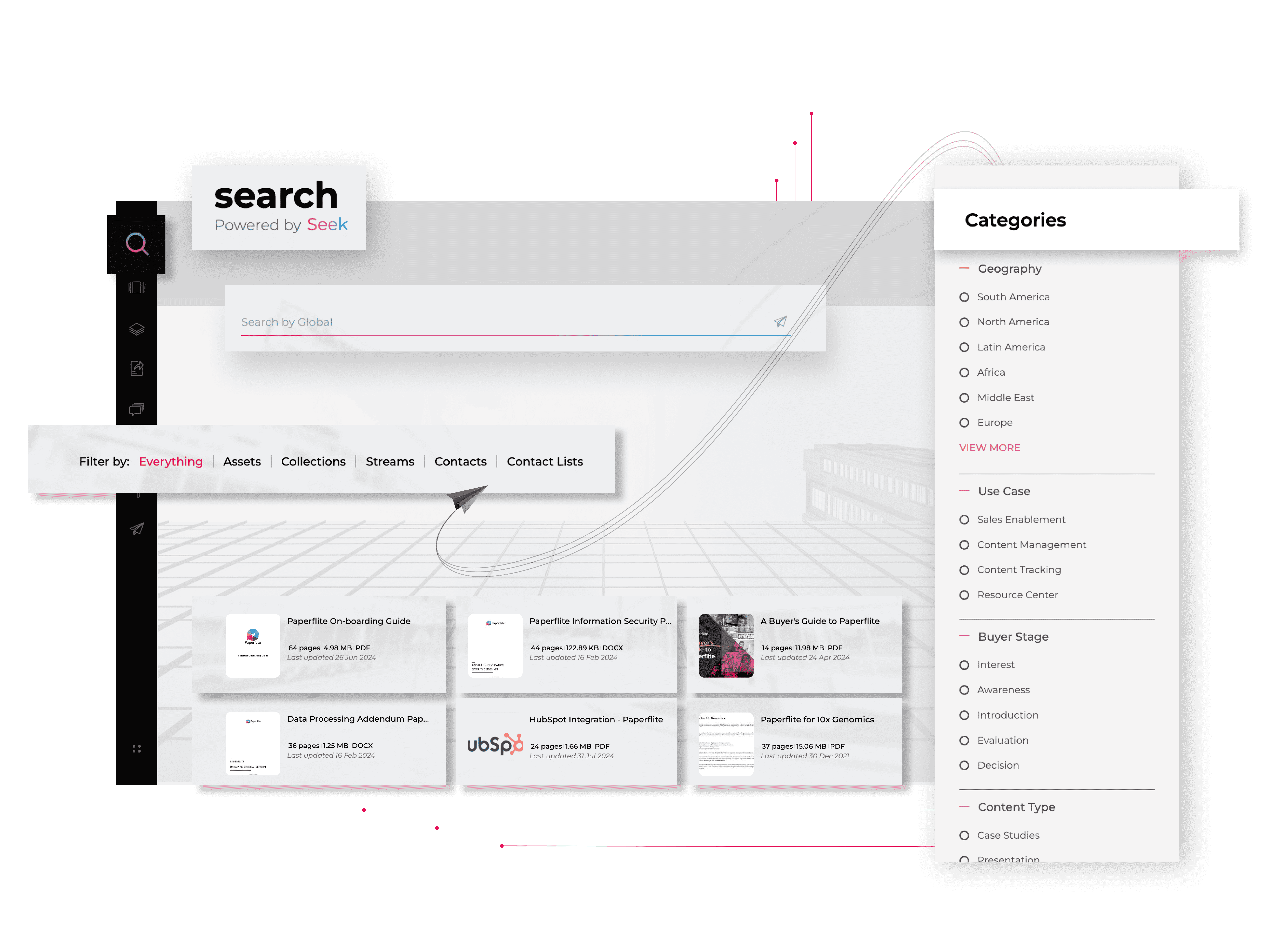
God-tier User Interface: We understand seller experience will not get better with a dull user experience. A Netflix-like interface helps you to increase the adoption rate among your team. (Also who wants to look at tables and tabs the entire day?)
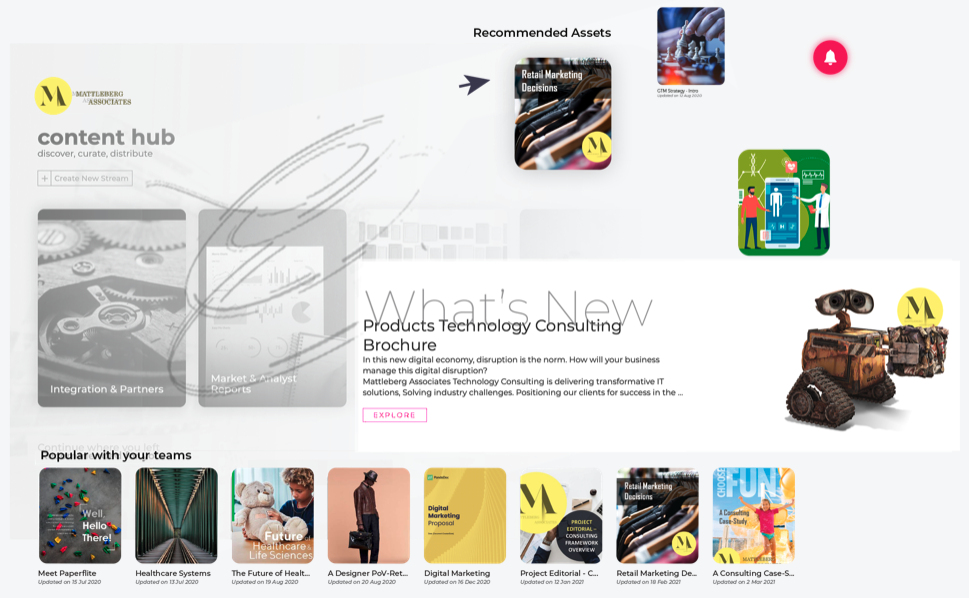
Happy Sellers, Happier Customers: It’s That Simple
Help your company by helping your sales team find the content and documents they need in a flick. Centralize your content by organizing them as per relevance. Create folders that are accessible to designated sales roles to avoid confusion.
This allows reps to quickly retrieve case studies, product brochures, or demo videos, ensuring that their follow-ups are timely and relevant. Information overload experienced by sales reps often gets passed onto prospects unknowingly. By simplifying workflows, sales reps can communicate faster, and better and improve client interactions.
With easy access to the right resources, follow-ups will become a breeze. Sales reps across the board will have access to the right material to reach out to their prospects.
To capture all customer interactions, use a tool that will integrate seamlessly into your existing system of CRM, ERP, and mobile devices. This is essential to shorten the learning curve so new joiners in the sales department can finish training and get to closing deals as soon as possible.
Adaptability enhances customer engagement by ensuring that sellers can respond in real-time, provide hyper-personalized recommendations, and maintain a frictionless buying experience, ultimately improving conversion rates and fostering stronger customer relationships.
The tool must have data-driven capabilities to suggest that will help them personalize the customer journey.
Conclusion:
When sales reps are armed with the right resources, tools, and data it amplifies their joy for work. Sellers experience a lot more psychological, it is a subtle motivation factor that is often ignored in a world of exponentially growing targets. Implementing seller experience is not a herculean task.
By following the actionable steps discussed above- such as content organization, workflow automation, and sales enablement - you can ensure that your team operates at peak efficiency.
The book Customer Comes Second by entrepreneur Hal Rosenbluth reflects on how a positive environment set for employees translates to improved customer experience. The book discusses how managerial practices of putting your employees first have created nothing short of ‘revenue magic’ for the company.
Enhancing seller experience is a strategic investment that pays for itself with higher revenue, reduced sales cycles, and an enthusiastic sales force. By equipping your team with the right resources and tools, you set them up for success.
After all, there is no long-term success if you do not have a team empowered with the right resources, support, and tools so they can eat, breathe, and dream selling.
